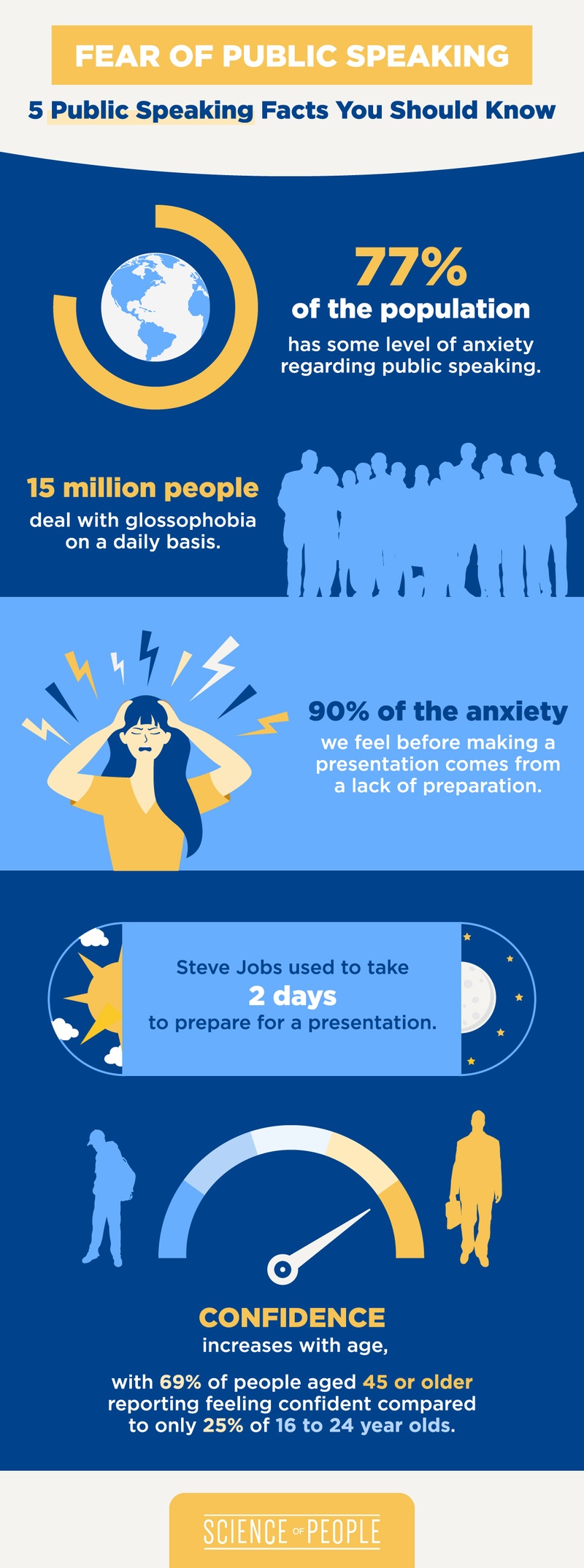
Preparing for meetings can be bone-crushingly difficult—especially if you have glossophobia, the fear of public speaking. It’s estimated that 77% of the population fears public speaking.
But fear not! In this guide, you’ll find expert tips from Vance Van Petten, author of Ten Minutes to the Speech and former Executive Director of the Producers Guild of America.
Smeathing
Smeathing is when you smile while breathing. It naturally relaxes your esophagus and chest. Smeathing is a great anti-anxiety technique because it’s much more difficult to breathe rapidly and shallowly while we’re taking deep breaths. Putting a smile on your face also activates mirror neurons associated with happiness.
Smile + Breathing = Smeathing
In addition, smeathing makes us naturally execute what’s known as a “savor smile.”
A savor smile is a naturally occurring smile that takes a half a second or longer to blossom on one’s face.
Savor smiles are the type of smile that might occur when you’re relaxing on the beach or enjoying a warm gingerbread cookie next to a campfire.
Action Step: Try smeathing! Take in a deep breath and smile as you exhale. It might be a good idea to smeathe right before you meet a group of people, have an important meeting, or are about to give a presentation.
Craft Your Impressions
First impressions are critical. In fact, research shows that most people form their first impressions of others within 7 seconds.
So if you’re not making a killer impression, you might want to consider brushing up on your skills. You can even think of your first impression like an elevator pitch—and practice it until it’s perfected!
Learn to nail your elevator pitch and make an unforgettable first impression.
Finalize The Agenda
Before a meeting or pitch, who’s the one person going over the agenda? If it’s you, you’ll want to make sure you include proper introductions for each person. For example, take a look at how Tom Bilyeu introduces his guests. Each introduction is thorough and highlights the person’s most important accomplishments.
A good agenda has times, people, and goals. Don’t be afraid to add details!
Sample Agenda:
- 10 a.m., Joe: Introductions, introduce new people
- 10:05–10:30(ish) a.m., Melissa: Goal overview and ideals for 2022
- 10:30(ish) a.m., Vishen: Data analytics review and question time
- 12 p.m., Carol: Wrap-up and next steps
Create Your Lineup
You might also want to make sure speakers are in a good speaking order. For example, during remote video calls, you might have heard this question being thrown around: “Who wants to go next?”
Not only can this lead to an awkward silence, but it’s likely nobody wants to be the first person to take the bait. Instead, order your list of speakers and have the lead agenda person guide the speaking turns.
Pro Tip: If you’re leading a big meeting, you might want to save some of your best speakers for last, or they may overshadow your weaker ones.
Use a Visualization Technique
If you’re afraid of public speaking, it doesn’t mean you can’t become great at it.
For example, did you know that famous people like Abraham Lincoln, Nicole Kidman, and Thomas Jefferson were all afraid of public speaking?
Here are 2 simple techniques you can use to calm your nerves before (and during) a speech:
- The Landlord Technique. Dale Carnegie, author of How To Win Friends and Influence People, used a special technique of visualization. Before he went into a room full of people, he would imagine the entire audience owed him money. During his speeches, this gave him great confidence to sound confident and feel powerful.
- The Undressed Audience. Another technique you can use, which was used by Winston Churchill (and which you may already have heard of), is to visualize your audience undressed.
While both of these techniques are similar, one may work better for you. Or maybe neither of them will work and you might come up with your own snazzy visualization technique that works for you!
Speak Like a Friend
A great way to connect to a large audience is to not try to address everyone, but address one specific person like they’re your friend. You’ll make a much deeper connection with them, and others will pick up on this too.
For example, here’s an iconic moment in the 1992 United States presidential debates between George Bush and Bill Clinton. Notice how close and personal Clinton gets to his audience member:
Talk about building rapport! In video calls, you can try looking directly into the webcam to take advantage of eye contact.
Pro Tip: Speak to your nodders. During your speech, keep an eye on those people who are nodding. These people are receptive and are usually better targets to build a connection with.
Want more public speaking tips? Read on:
- 15 Science-Based Public Speaking Tips To Be a Master Speaker
- 17 Body Language Presentation Cues to Use in Your Next Speech
- How to Start a Speech: The Best (and Worst) Speech Openers
Now on to you! A huge part of getting over public speaking is truly understanding people—how they feel, how they think, and how they use their body language. In fact, reading body language is somewhat of a “superpower” because you can gain deeper insights into what people are truly saying with their bodies.
Check out this ultimate guide on body language to sharpen your skills: The Ultimate Guide to Body Language.
